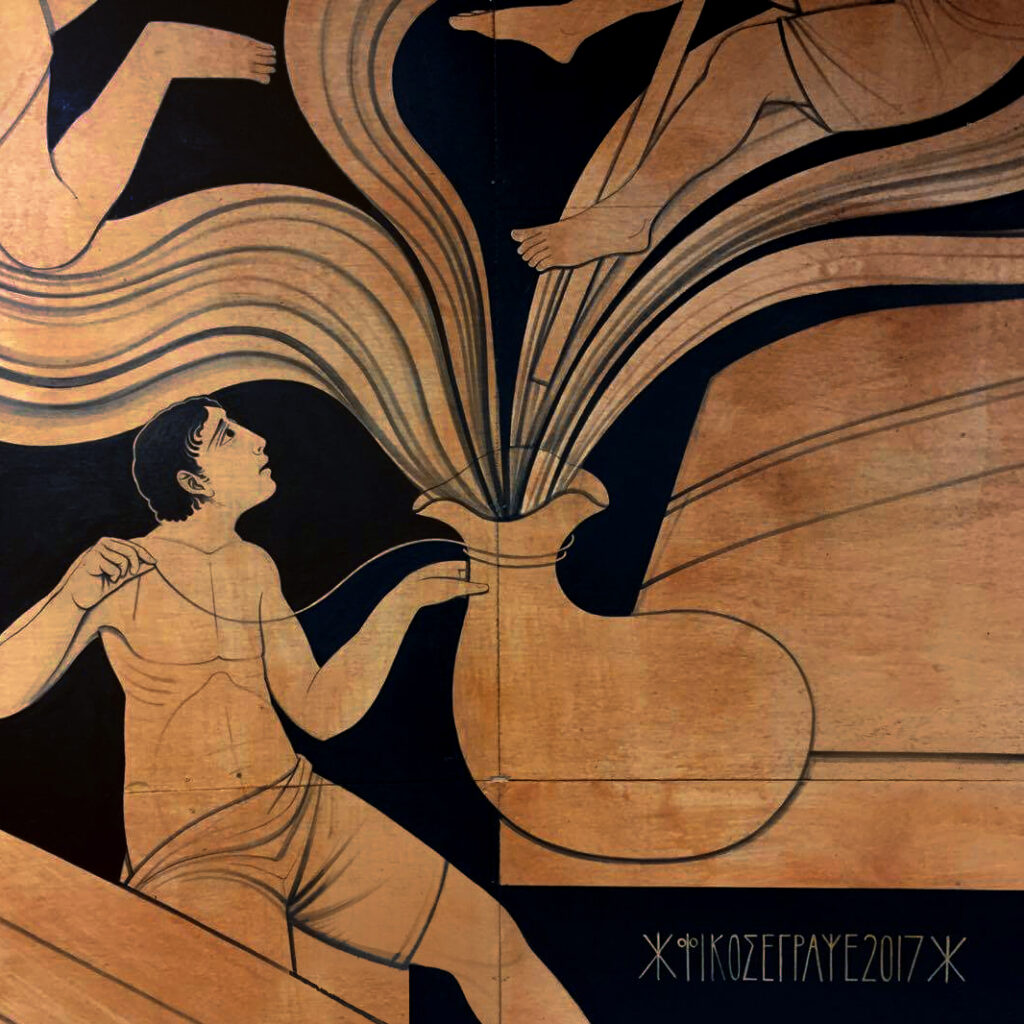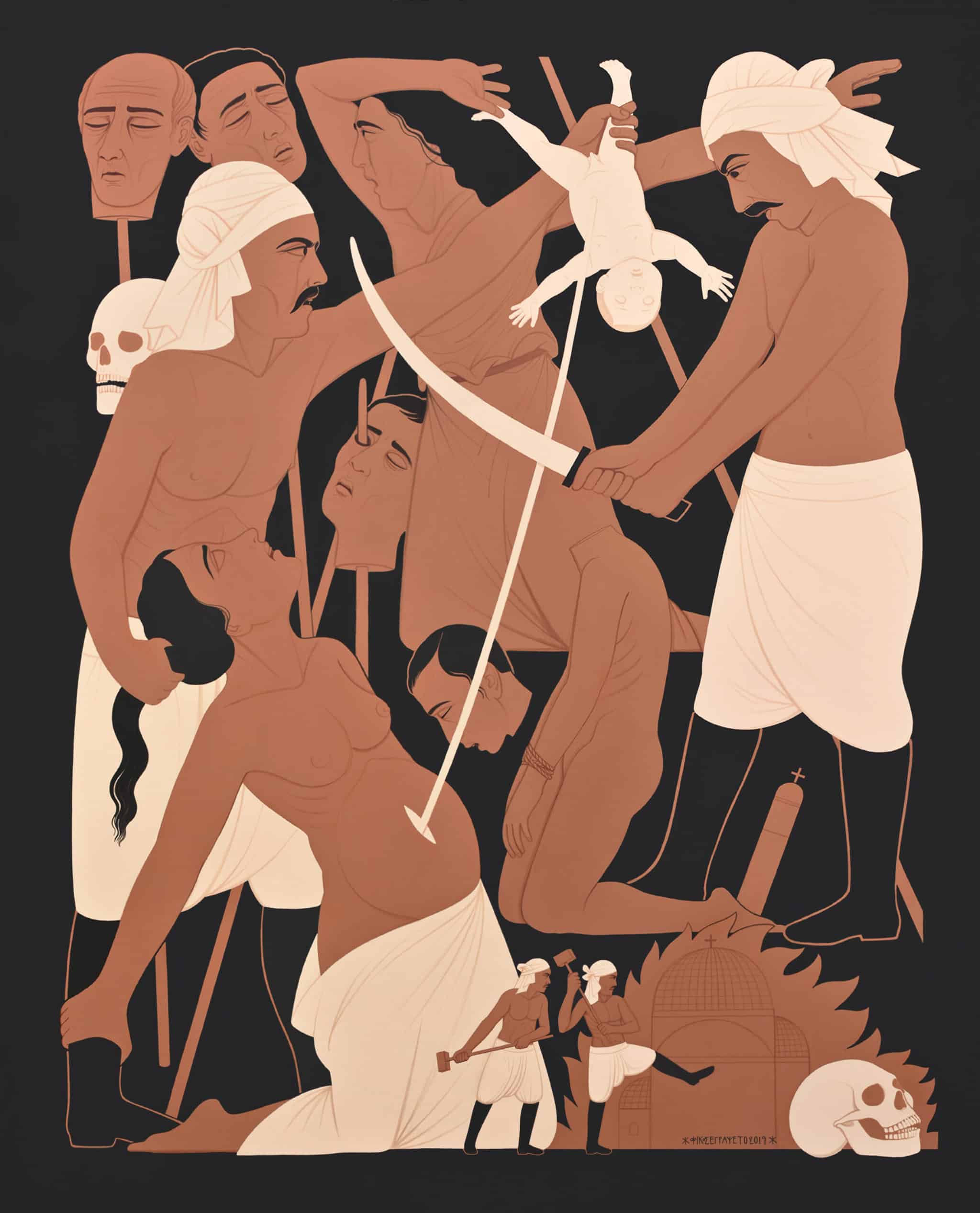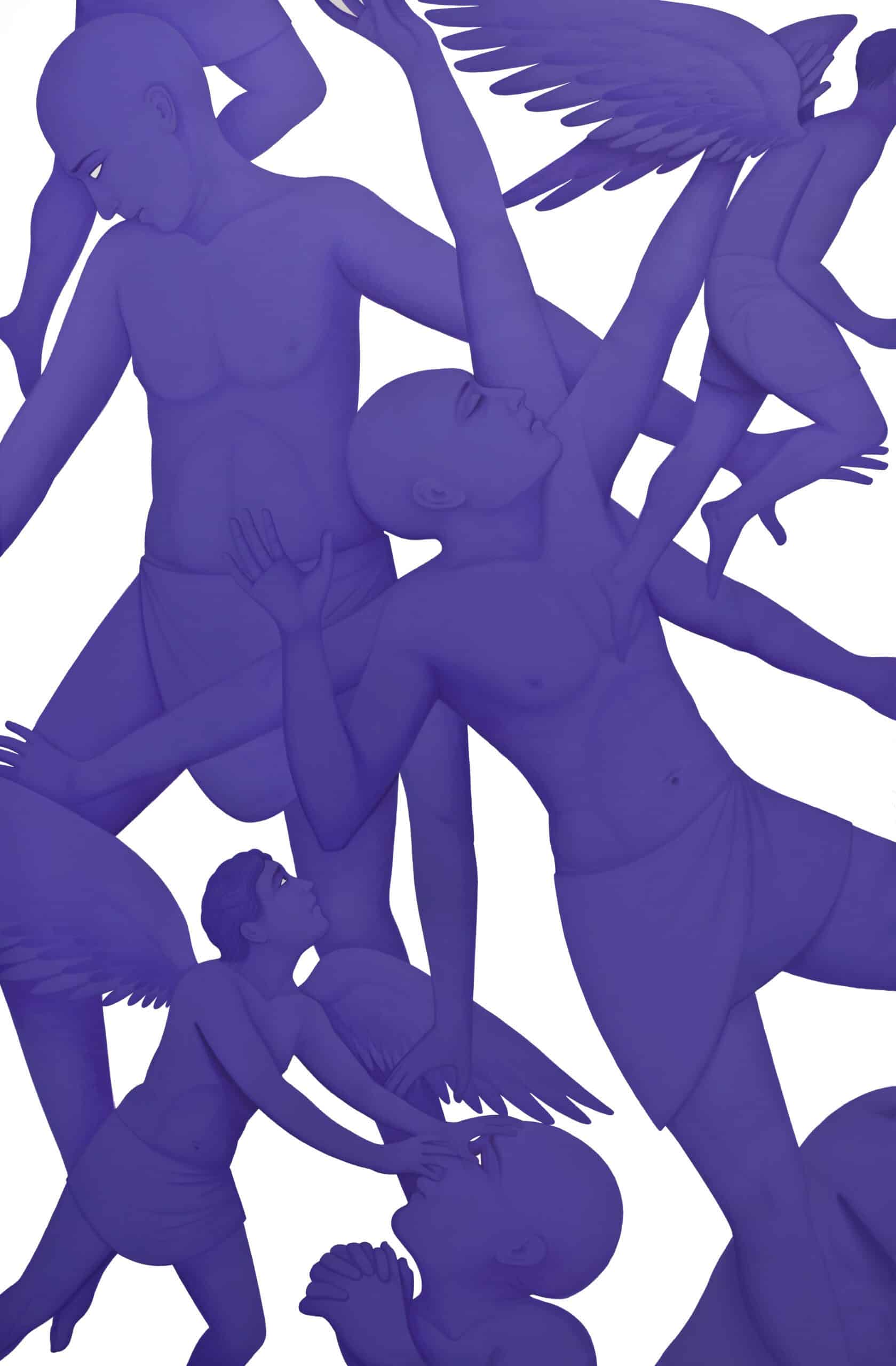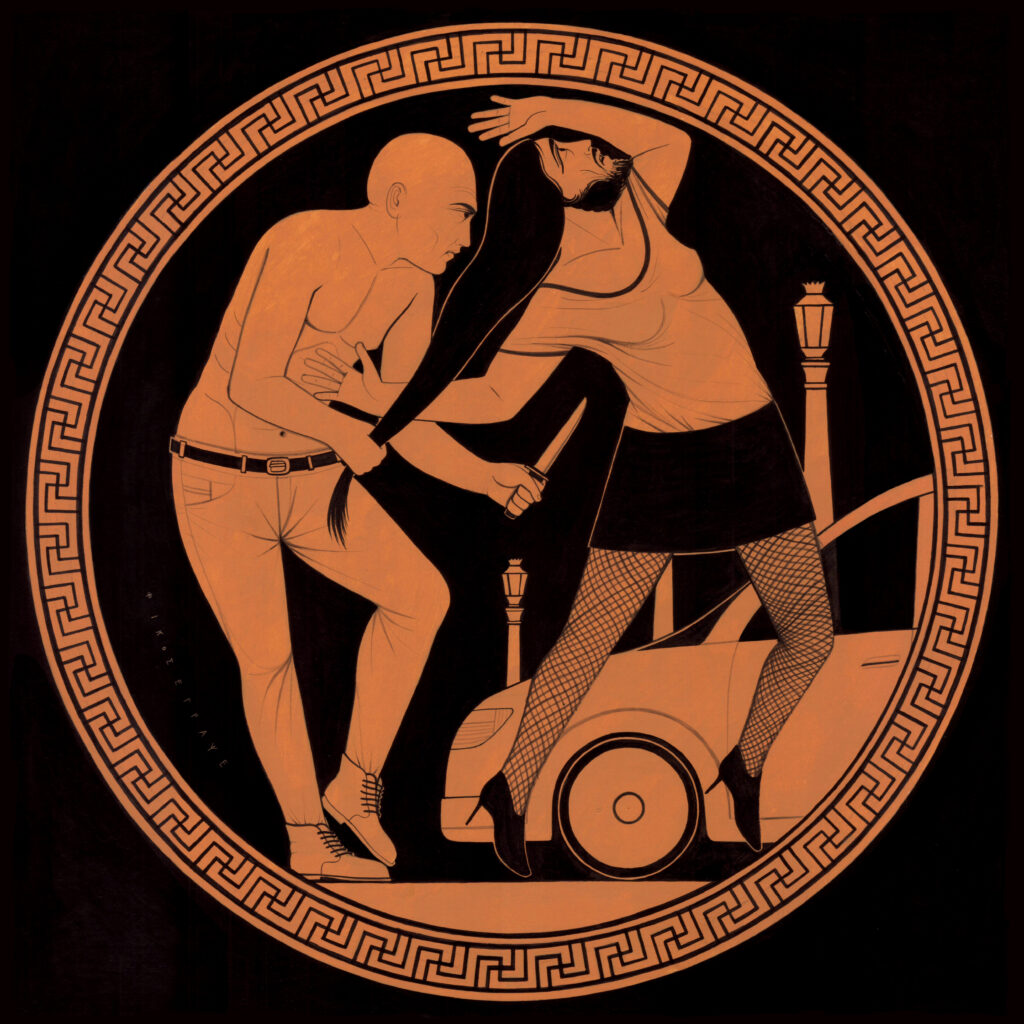Fikos is a painter and muralist from Greece.
He is the creator of the largest mural in the history of Greek and Byzantine art.
Entitled ‘Earth&Sky’ the 46-metre high masterpiece covers the side of a seventeen-storey building in Kiev, Ukraine, taking Fikos thirteen days to paint.
At the age of 13, Fikos answered his calling – and began studying Byzantine painting in Athens.
He invented “Contemporary Byzantine Painting” - a term and artistic style later adopted by many artists around the world - and combines his traditional style with contemporary themes and movements, such as Street Art.
Fikos has presented his magnificent work in four solo and many group art shows.
He has exhibited in institutes such as Benaki Museum, Athens and to more than 18,000 visitors at the first Larnaca Biennale, Cyprus.
Internationally acclaimed, at just 33 years of age, Fikos has painted many murals all over the world, in addition to commission murals for the municipality of Versailles, and indoor murals at the ETH Zurich University.
Fikos’ focus remains on the ways traditional arts can revive and serve the contemporary world.
Greek City Times was lucky to be able to interview this ingenious artist, whose inspired creations are making waves across the globe.
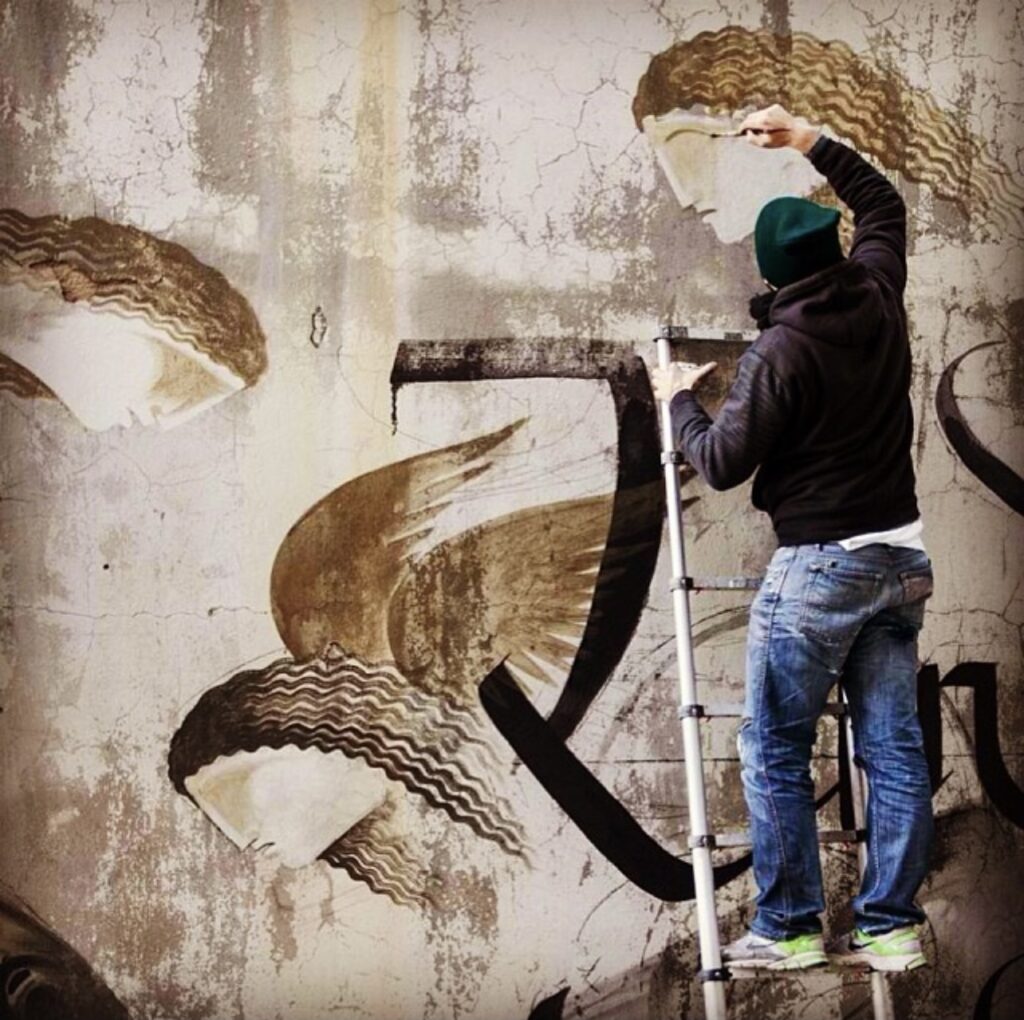
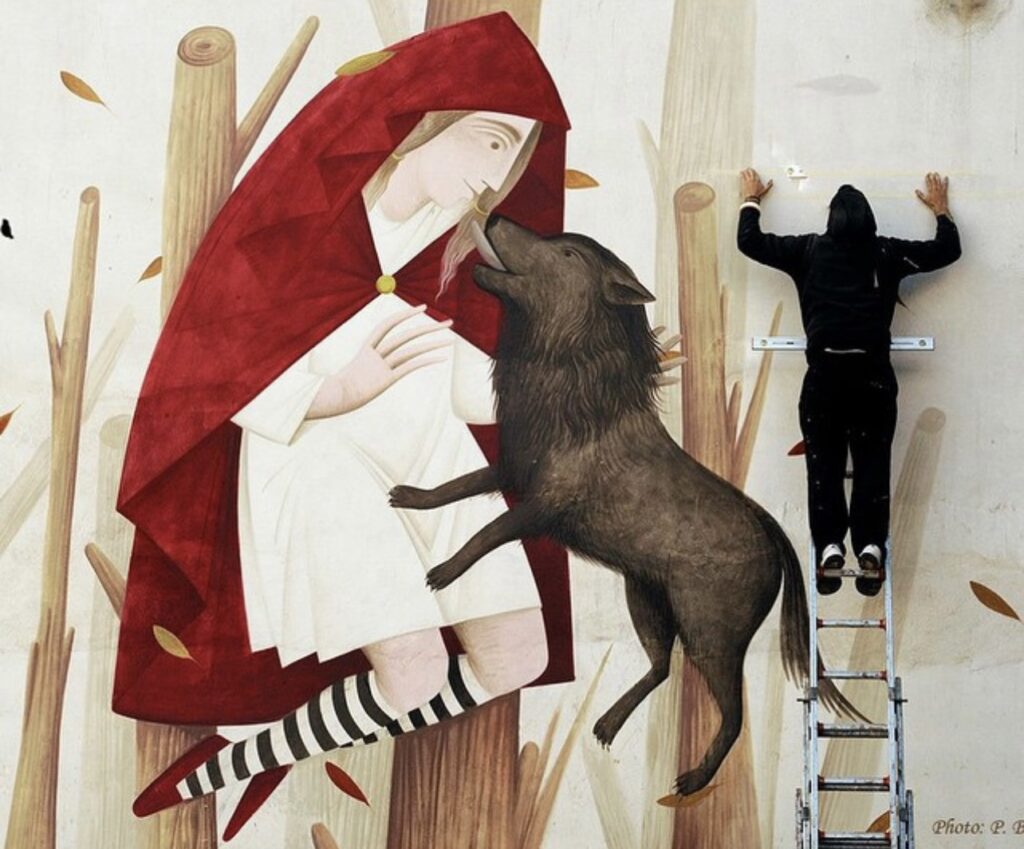
What style would you call your art?
Ten years ago, I invented the term “Contemporary Byzantine Painting”. That came out of my need to answer to people’s question “In what style are you painting?” in a concise way.
Through the years my art evolved towards ancient Greek art, Hellenistic painting and modernism with influences from many different arts such as ancient Egyptian painting, Soviet posters, even contemporary artists.
I am not sure if a term could properly encompass all of that.

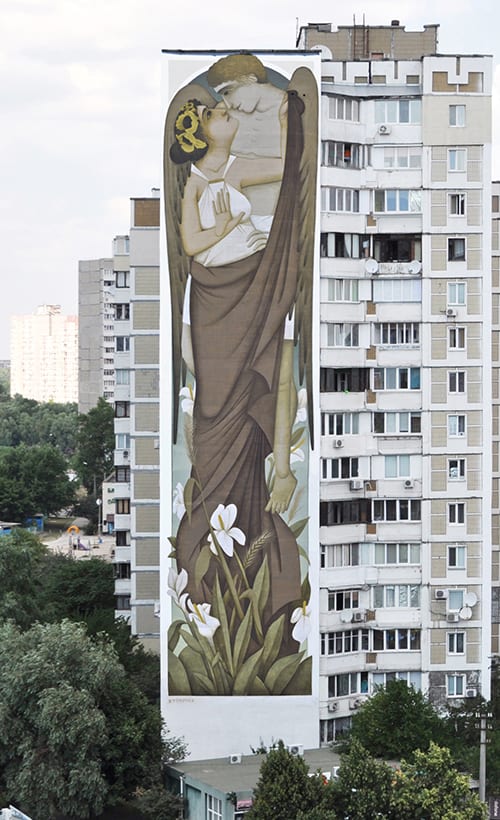
I would imagine that you have spent a lot of time researching art, history, the Greek culture. Can you explain what research you have undertaken in order to have been able to produce the artwork that you have, with its underlying themes and messaging?
I love knowledge and I love reading and writing. Unfortunately, I discovered that a couple of years after finishing school.
Since then, I have been studying incessantly; ancient Greek literature and philosophy, global history, ancient civilisations and cultures, religions and their sacred books.
If I was asked to choose one based on its importance, that would be history.
Everyone should be studying history. We would avoid so many mistakes of the past.

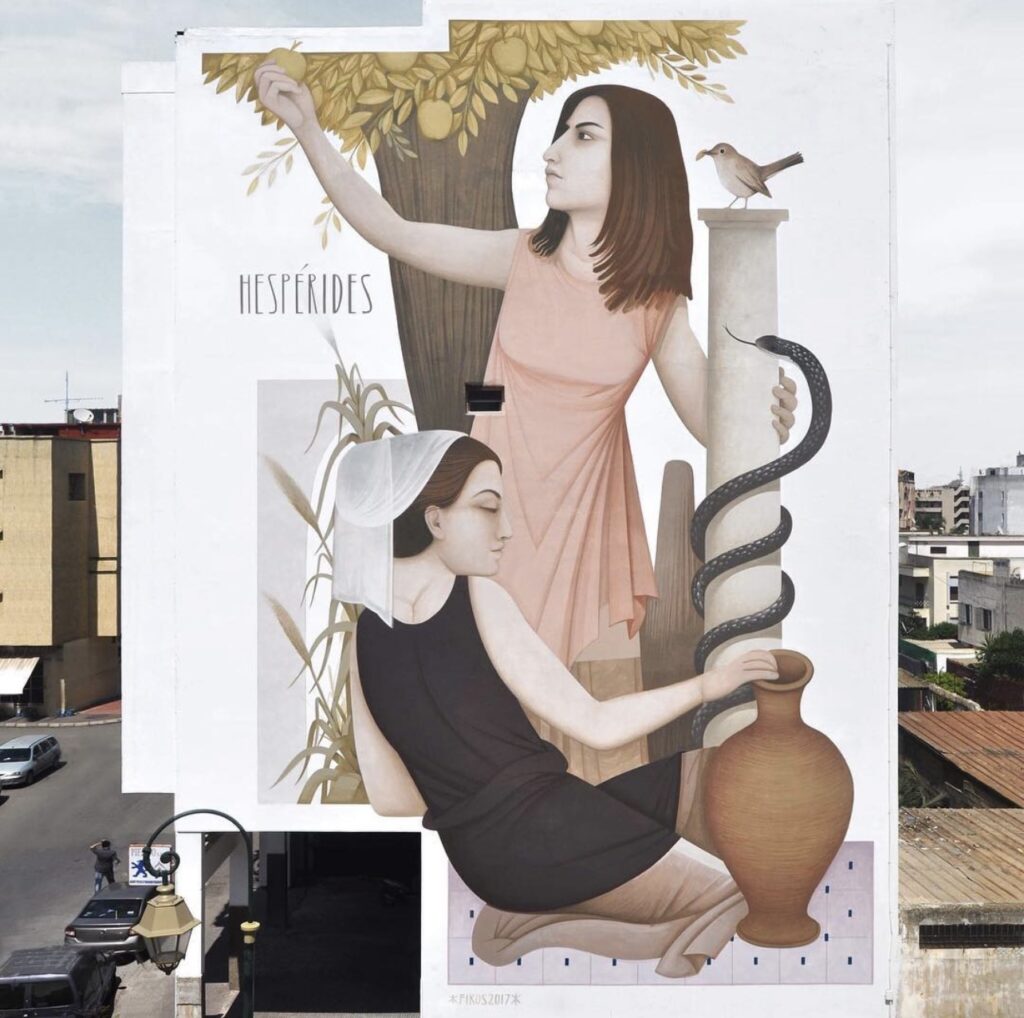
Can you explain your concept of ‘Neo-muralism’?
I don’t know who created it, but I think “Neo-muralism” could be a useful term to describe the artistic movement that has taken place in the urban landscape of the world for the last decade and mainly concerns large scale wall-paintings.
We should be cautious though; if we agree that the main feature of mural art is its social character, then not every huge wall-painting should be considered part of the “Neo-muralism” movement.
Let me explain:
Public art (mostly expressed in the form of murals) was the norm in most of human history: from the caves of Lascaux, to ancient Rome, to Mexican muralism.
Although mostly used over time as a medium of political and religious propaganda, art in public space was, indeed, expressing the society. Its themes were historiographical, educating, didactic, ethical.
After the late 19th century, when the new industrial society and rapid growth of the cities gave birth to modernism and the rise of individualism over collectivism, this art form has declined.
We can recognise the last resistance of mural art in the Mexican and Soviet muralism (‘20s, ‘30s, and later on) but this art was no different to the public art of previous eras, like Baroque, Renaissance, Western and Eastern (Byzantium) Roman Empire: they were regulated by the respective government and they were politically charged by the nationalism of the era.
With respect to the present time, it’s only a decade since we started seeing the simultaneous appearance of big murals all around the world.
Who is creating these? We, the people.
For the first time in history, public art is created freely, beyond regulations, religious beliefs or political influence, mostly by self-taught graffiti writers, street artists or anyone with a spray can. In this sense, we could say that Street Art is “art by the people”.
However, there is a paradox here.
It may be “art by the people”, but it is not “art for the people”. How can that be? The answer has to do with the intention.
To a large extent, Street Art is being used as a medium for self-expression and self-promotion. Every street artist has his own distinct colours and topics; by which he is trying to leave his mark wherever he goes.
On the contrary, mural art, the true “art for the people”, aims to create works for the society: it illustrates educational themes that are related with the place and its history and it respects the architecture and the colours of the building and its surroundings.
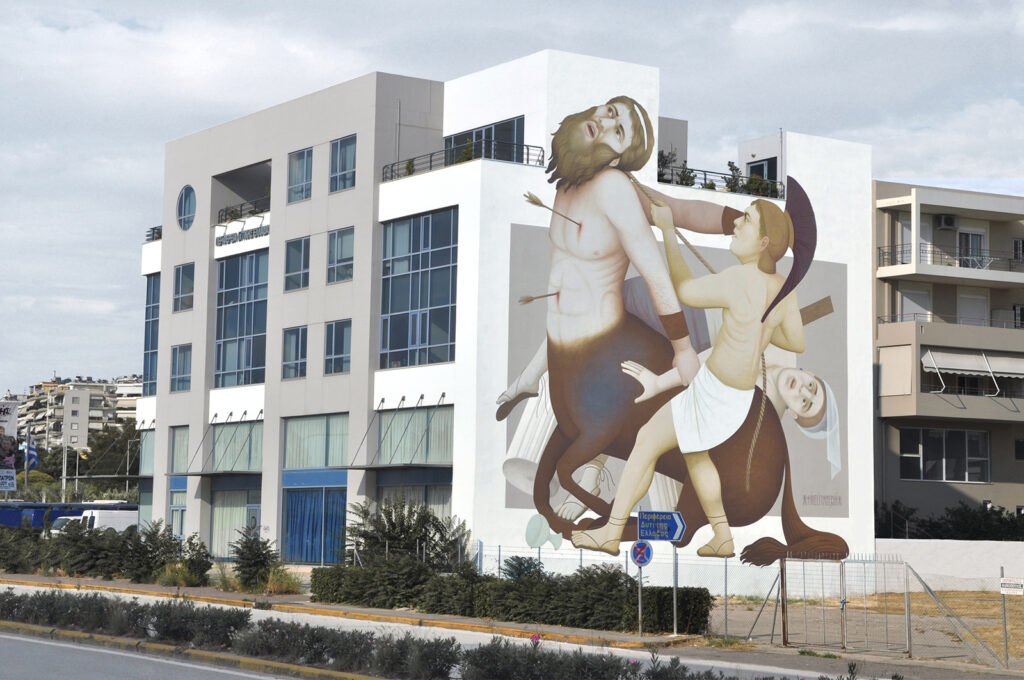
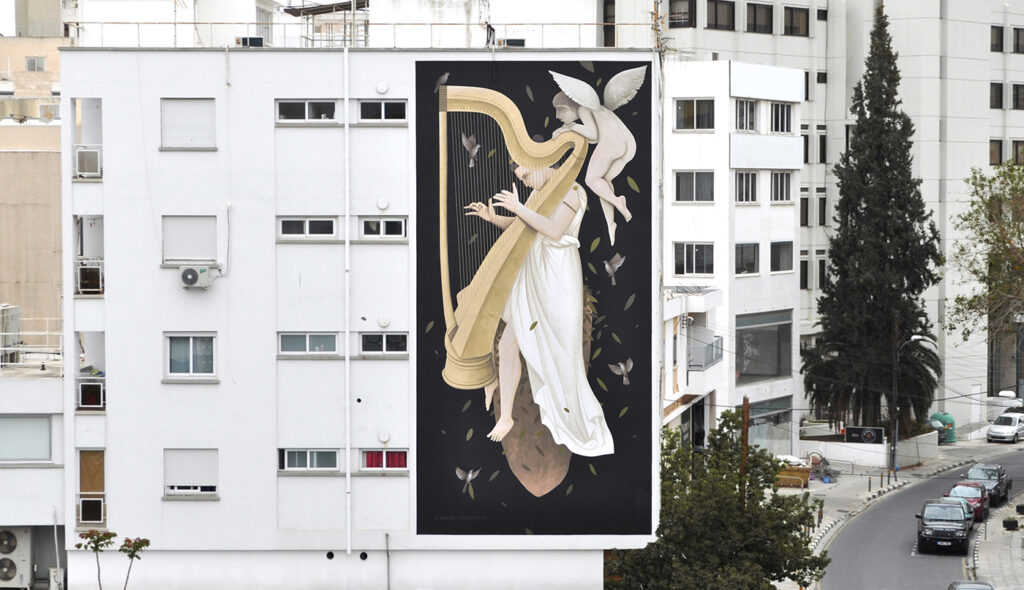

Can you explain your concept of Neo-muralism and urban art as the original ‘Demiourgia’?
There is an interesting etymology about the Greek word used for “creation” that unveils how the Greeks perceived art in relation with the society.
“Creation” in most languages means “I bring something into existence”. So, everything I create is a creation.
The corresponding word in Greek, “Demiourgia” (Δημιουργία), is a compound word (Demiourgia: Demos+Ergon=People+Work) that literally means “work for the people”.
So, according to Greek language, not every work or art is a true “creation”, but the ones that are made for the people/ society.
Post-modernism couldn’t disagree more on that, but, is it possible that “Demiourgia” could teach us something about the social character of art today?

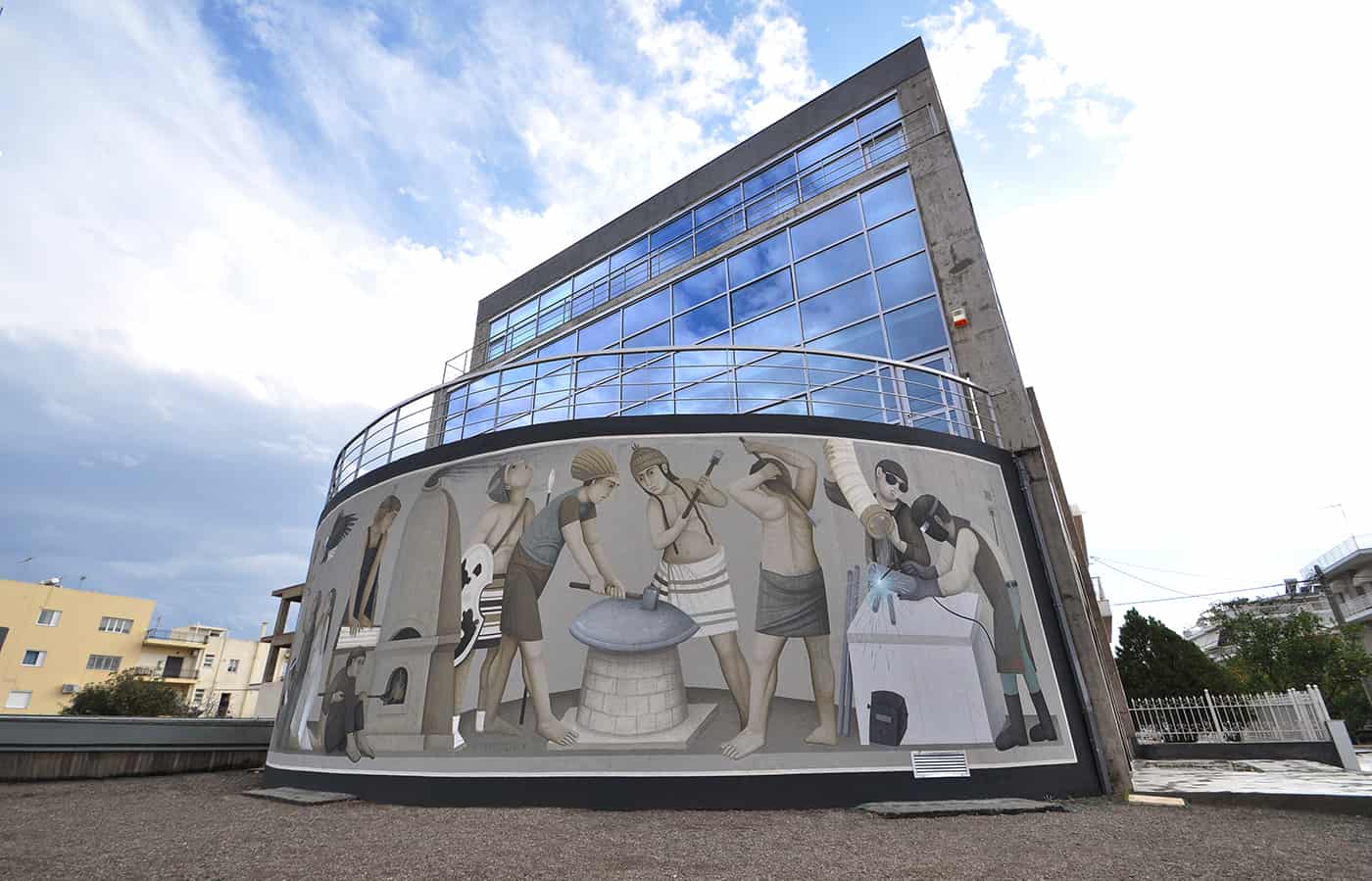

What are your future ambitions? Your vision for the future?
I have two artistic goals: one for my art and one for mural art, in general.
My first goal is to study all major painting traditions in history.
Having as a starting point the Byzantine painting, I have already studied a lot the ancient Greek, Hellenistic, Egyptian and Sumerian art. I would like to continue with Japanese woodblock prints, Mayan murals, Persian miniatures and many more.
My second goal is to spread the mural art and the social values it carries: communication, education, cooperation, unity.
Your Instagram bio says that you are a “painter on a journey to explore the ways old traditions can serve contemporary society.” Can you please explain what this means to you?
Few will deny that our era is characterised by division.
I am afraid that the pluralism of (what we wrongly, in my opinion call) “contemporary art” is supporting or even creating (if we believe that art precedes society), a communicative chaos.
Today, almost every artist has his own individual artistic language, and this is considered to be a good thing.
Yet, to realise how wrong this is, imagine if every author was writing on his own, a completely new language. The viewer, who, of course, cannot learn millions of individual languages, has no other option but to trust the art historians and curators about what is “good”. Essentially, he is not participating.
I believe that the old traditions can provide the base and the means to build contemporary communication channels that will close (or, at least reduce) the gaps between us and bring us closer.


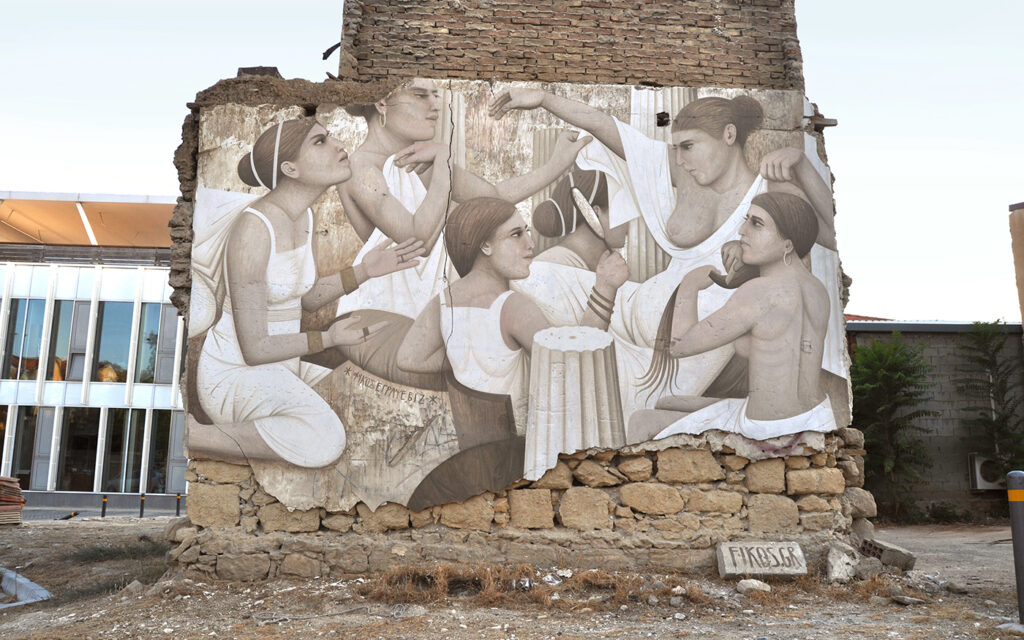
Are there any upcoming projects that you would like to tell us about?
My next mural projects are going to take place in the next few weeks, in Marseille and Paris.
What is the largest mural you have created? What do you see as your greatest accomplishment as an artist so far?
My largest mural so far is the “Earth&Sky” in Kiev, Ukraine, at a height of 46 metres. Its creation took me 13 days.
As the largest mural in the history of Greek and Byzantine art, I consider it a special accomplishment, because it proves that this tradition is alive and evolving.

Instagram: @fikosantonios
Website: www.fikos.gr
The Mathematical Masterminds of Medieval Pyrgi
The New Fragrant Garden of Athens
